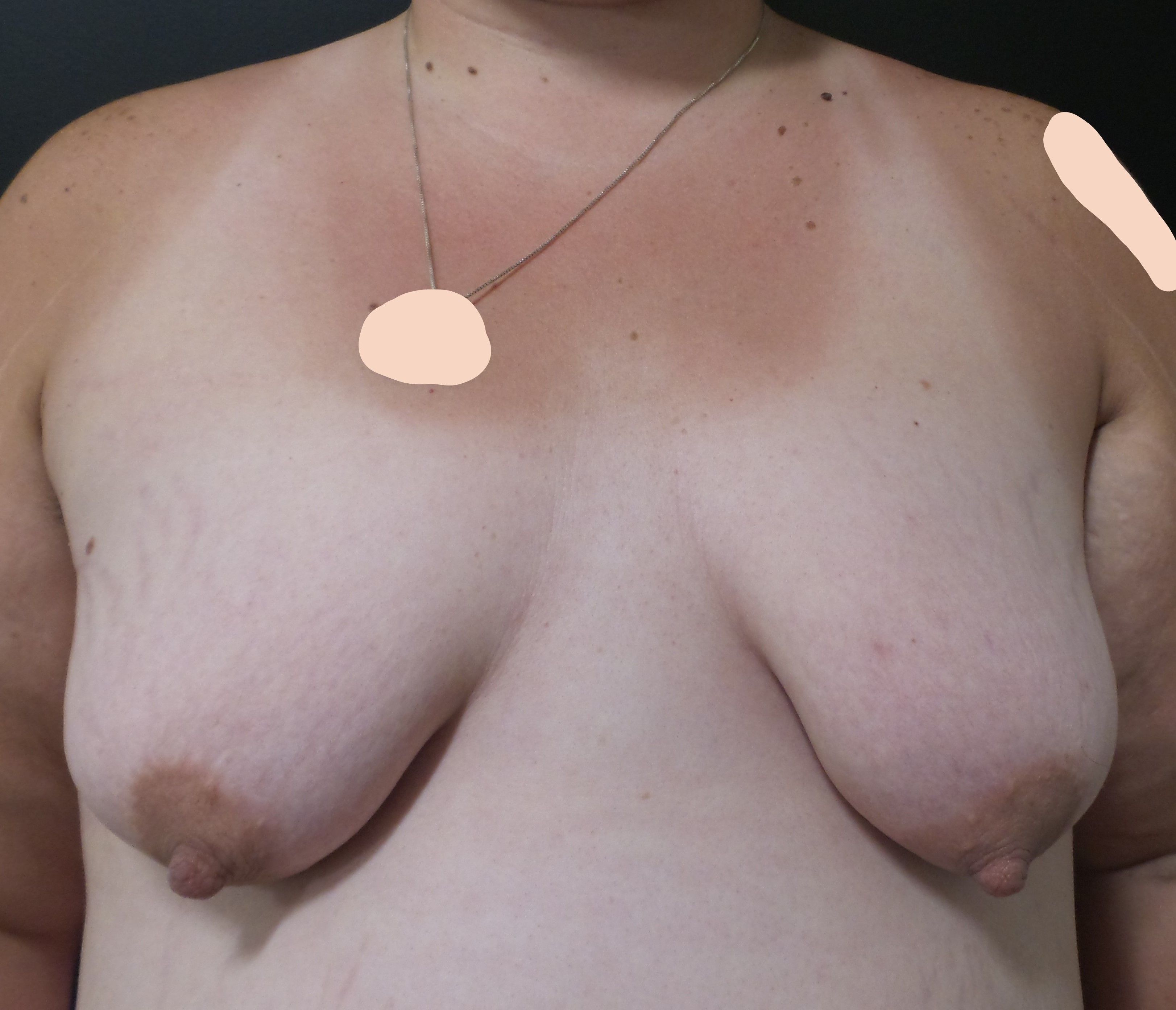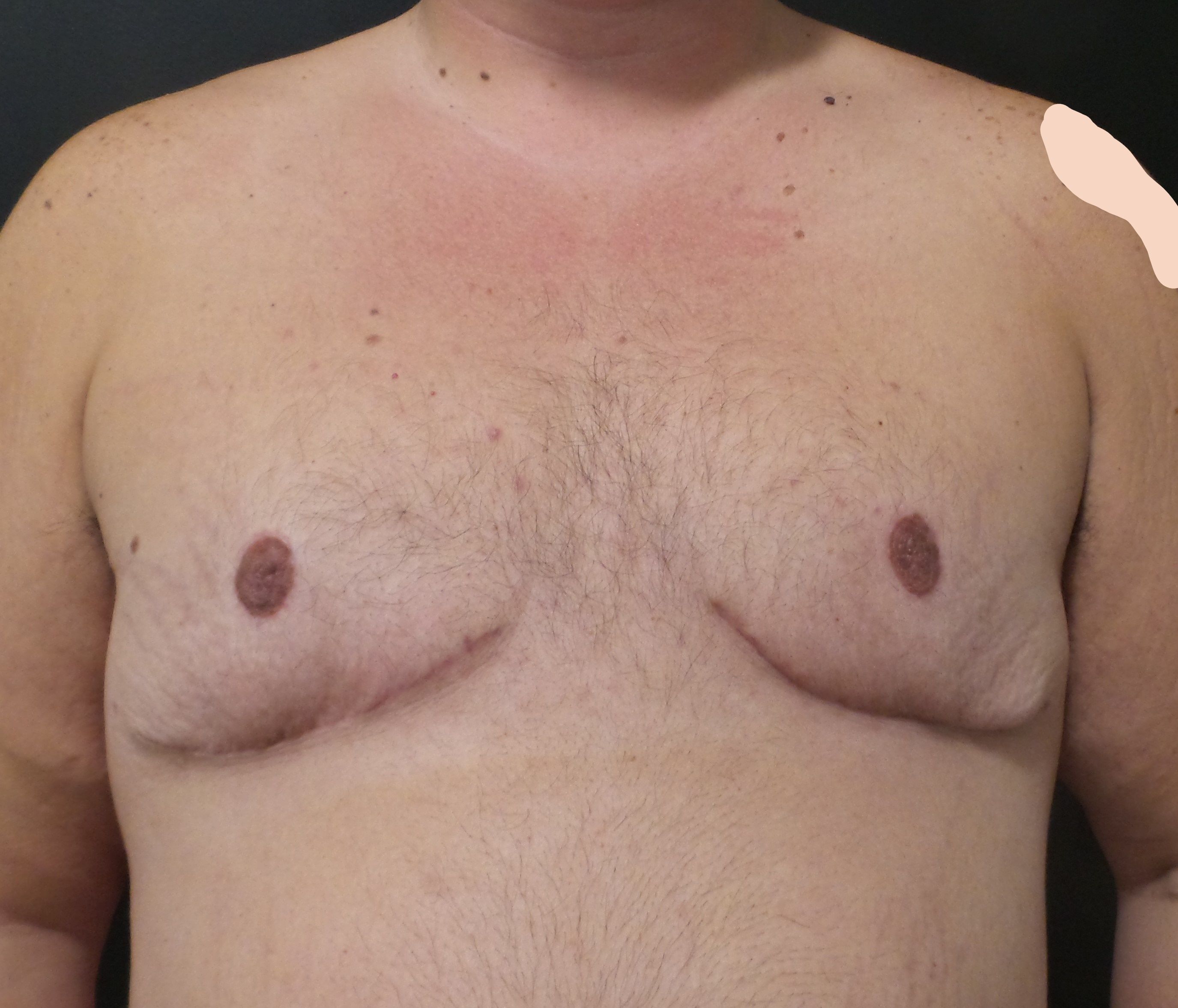Transgender Top Surgery in Connecticut
Gender Affirmation Surgery in Connecticut
Gender Reassignment Surgery in Connecticut
Female to Male (FTM) Top Surgery in Connecticut Gender Affirmation Top Surgery in CT
Female to Male (FTM) top surgery is the breast procedure for female to male gender reassignment. It is a surgery that flattens and masculinizes the chest with surgery.
Dr. Jandali dedicates most of his practice to breast surgery. The complex techniques that have been fine-tuned for complex breast reconstruction and gynecomastia surgery are adapted for FTM Surgery in gender affirmation. These techniques are customized to each patient’s chest anatomy, breast size and shape, and their desires.
Keyhole Top Surgery
If you are currently small-breasted, FTM surgery can likely be performed with minimal scarring around the areola (the pigmented skin surrounding the nipple). This is often referred to as a keyhole incision if it is partially around the areola. The scar will need to extend fully around the areola if the size of the areola needs to be reduced to masculinize it. The excess breast tissue is removed through this small scar, essentially flattening the breast. Often, liposuction is also performed to give a smooth contour around the edges of the breast. Usually a drain is necessary to prevent build-up of fluid inside the breast pocket. A compression garment is used postoperatively to reduce swelling and aid in comfort.
Double Incision or Inverted T (Anchor) Top Surgery
If you are currently larger breasted, either a double incision approach, or an inverted T (anchor) incision is used. It depends on how much skin redundancy is present. The excess breast tissue and skin is removed to give a smooth masculine contour. With either of these techniques, the nipple can sometimes be left attached, but sometimes has to be removed and repositioned with a free nipple graft. A drain is always placed with either of these techniques. A compression garment is applied at the end of the surgery.


Male to Female (MTF) Top Surgery in Connecticut Male to Female (MTF) Breast Augmentation in CT
Male to Female (MTF) breast augmentation is a male to female gender reassignment surgery designed to provide patients with a contoured female chest with breast size appropriate to the female frame. Breast augmentation enlarges the breasts with a breast implant. This can be performed in a single or staged procedure depending on the patient anatomy. With either procedure, the scar is placed in the fold underneath the breast, so that it is as inconspicuous as possible.
A single procedure MTF breast augmentation is performed by placing an implant (either silicone gel or saline) in one of two locations: subglandular or subpectoral.
- Subglandular MTF breast augmentation – the implant is placed in front of the pectoralis muscle and behind the breast tissue.
- Subpectoral MTF breast augmentation – the implant is placed partially behind the pectoralis muscle. The muscle provides an extra layer of covering over the implant which can give it a more natural appearance.
A staged procedure MTF breast augmentation is performed in two stages. The first stage consists of inserting a temporary implant (tissue expander) into either the subglandular or subpectoral position. If the tissue expander is placed in the subglandular position (in front of the muscle), the tissue expander pocket is sometimes reinforced with a layer of biologic mesh known as acellular dermal matrix. Acellular dermal matrix has become the standard in breast reconstruction and it acts like an internal bra to strengthen the layer of skin covering the implant. The tissue expander is slowly filled in the weeks after the first surgery. It takes a few months after the tissue expander is inserted for it to completely stretch the skin to the desired size. The tissue expander is then removed at a second surgery and the final implant is placed.
Choosing an Implant for MTF Breast Augmentation
There are two types of breast implants: saline and silicone. Most patients choose silicone gel implants, as they are more natural feeling and appearing, with less chance of rippling. Implants aren’t lifetime devices and eventually need to be exchanged. Implant last about 10-15 years on average.
Implant size is chosen with the patient before surgery. We have a sizing kit in the office which gives an idea of which size is the best for a patient’s frame. Implants come in various sizes, widths, and projections (how much they protrude forward).
What does transgender top surgery involve?
All Top Surgery procedures are performed at the surgicenter or in the hospital under general anesthesia. All patients are marked by Dr. Jandali before surgery on the day of the procedure. The surgeries usually take 1-3 hours, depending on what needs to be performed. After surgery, patients go to the recovery room for 1-3 hours to ensure their pain is under control and they have no nausea. Patients are discharged with pain medication, nausea medication, and sometimes an antibiotic. Breast augmentation patients are also given a prescription for Valium to prevent muscle spasms.
Recovery after Transgender Top Surgery
It is normal to have some discomfort, swelling, and mild bruising after surgery. Discomfort is controlled with pain medication and anyone with nausea is given an anti-nausea medication. Patients should have a close friend or family member with them the night after surgery. Patients can move around their house freely and still use their arms for everyday things. Most patients take 1-3 weeks off from work, depending on their job description. Patients can shower two days after the surgery, except if they had free nipple grafts performed (which is 2 weeks without showering – sponge baths only so that the breasts don’t get wet). The drains usually get removed 1 week after surgery, but could stay in slightly longer. Patients can usually return to exercise and the gym about 6 weeks after surgery.
Scarring after Transgender Top Surgery
Dr. Jandali makes every effort to reduce scarring and ensure that the scars fade over time. All sutures are dissolvable and don’t need to be removed. Scarring is dependent on multiple factors including suture technique, tension on the incision, and location of the incisions. In addition, patient factors such as skin tone (collagen and elastin content), skin pigment, and hereditary factors have an impact on scarring. We recommend scar cream to be massaged into the scars twice a day starting a few weeks after surgery. For patients with a history of thick scars (hypertrophic or keloid), we recommend silicone sheeting after surgery. We have patient keep the scars out of the sun and use sunblock if exposed.
Insurance Approval for Transgender Top Surgery
Most insurance companies cover gender reassignment surgery. Insurance companies have different requirements before they approve and cover transgender surgery. These can include:
- That patients engage in 12 continuous months of living in a gender role that is congruent with their gender identity
- One or two letters of referral from a qualified mental health professional
- Completion of a year of hormonal treatment
- Mammogram and/or ultrasound of the breast in any female to male transgender patient
Dr. Jandali participates (is “in network”) with Connecticare. With all other commercial insurance companies, he does not participate and is an “out of network” provider. We obtain insurance approval before all surgeries and have an insurance advocacy team that walks you through the insurance approval process. Dr. Jandali will work with all insurance companies to obtain approval. For those companies that he is “out of network”, we work to obtain a single case letter of agreement (SCA or LOA) before the case so that the patients will not owe anything after surgery. This is a one-time contract between the insurance company and Dr. Jandali for coverage of your procedure.
If your insurance company does not cover the surgery, we can give you a quote for the out-of-pocket cost. We offer financing options to make payments affordable and reasonable.

